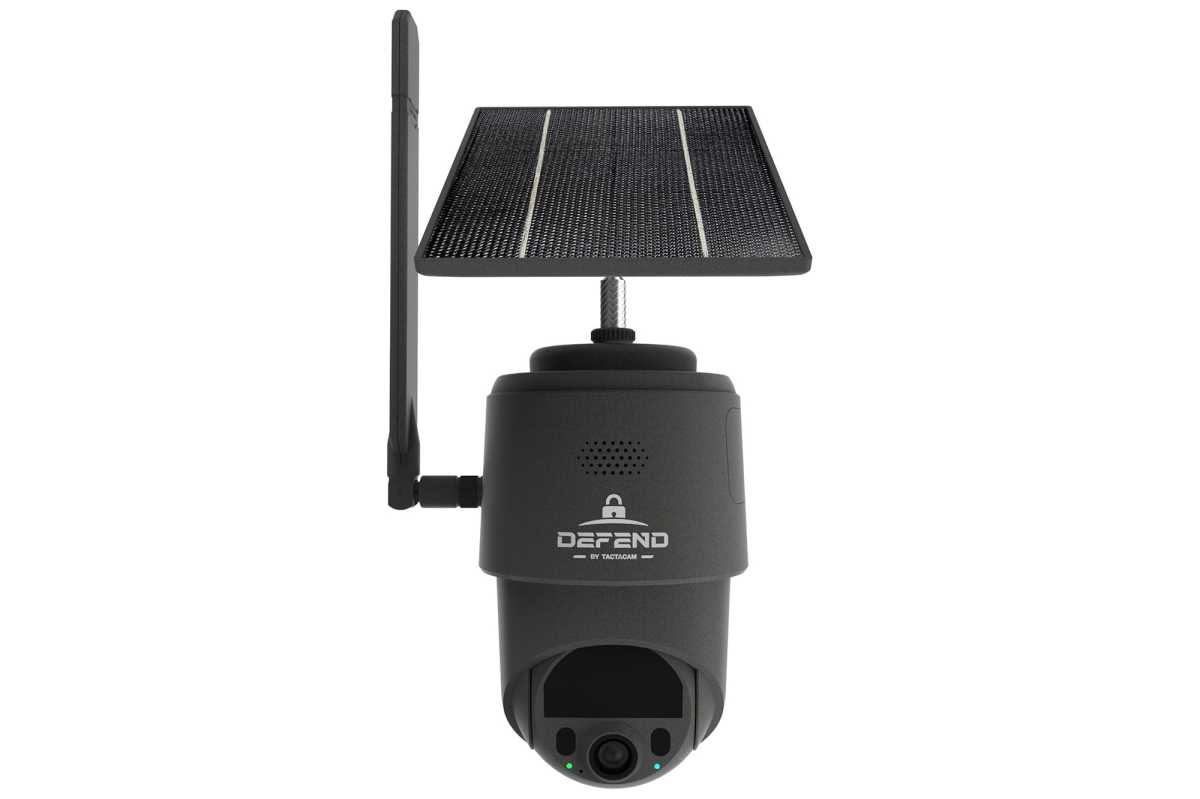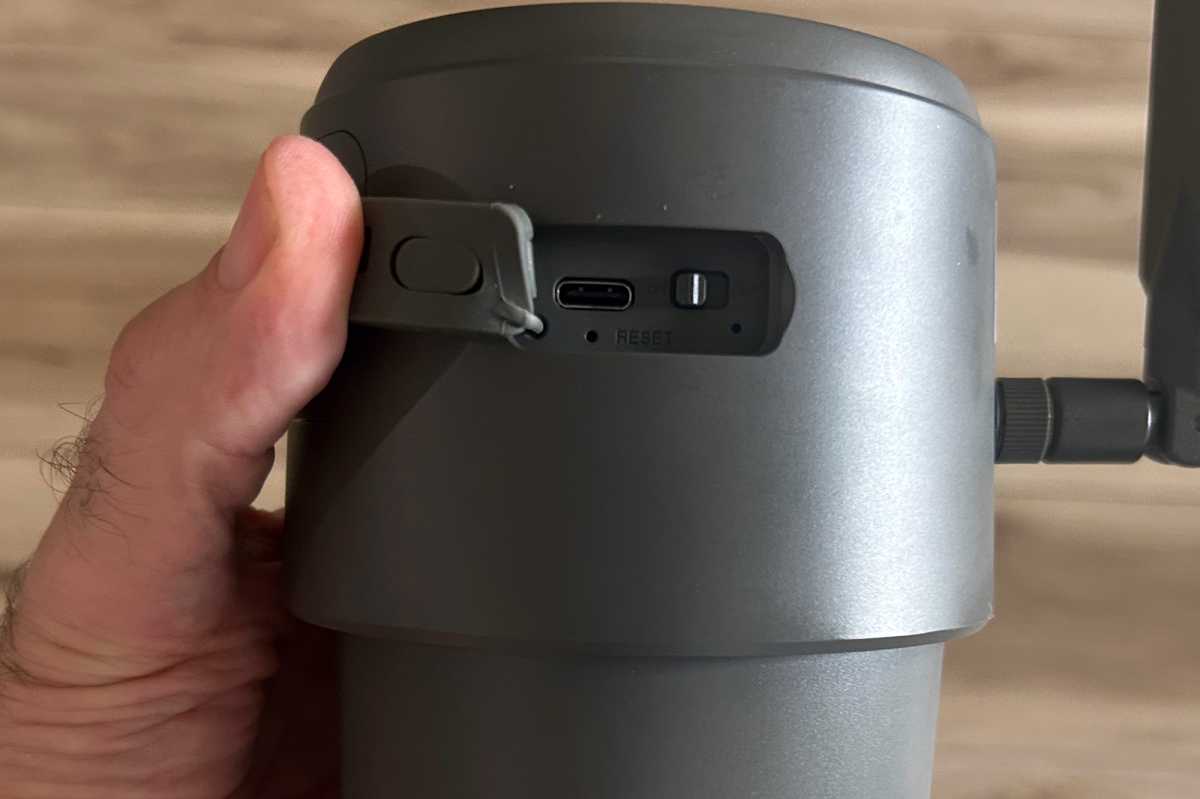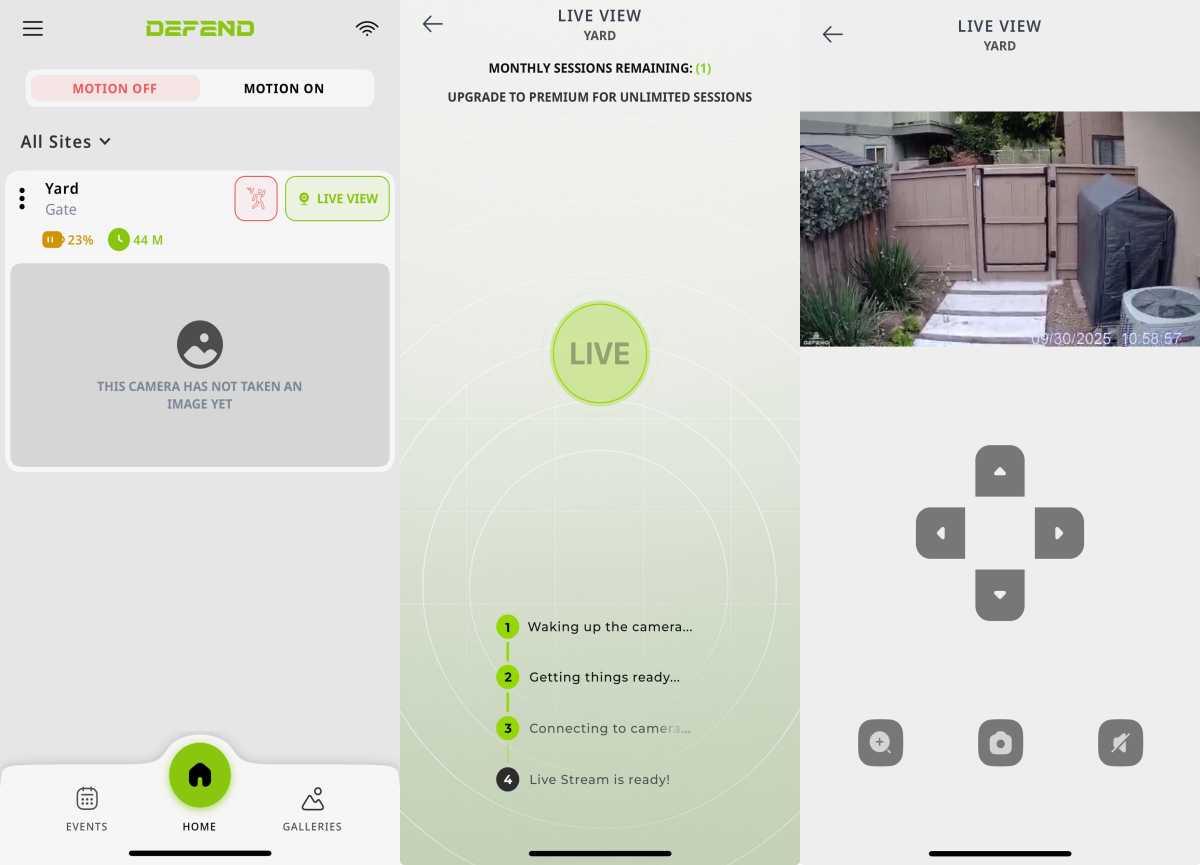At a glance
Expert’s Rating
Pros
- Works without Wi-Fi or wired power
- Affordable data plans starting at $5/month
- Solar-backed rechargeable battery
- 360-degree pan/tilt plus zoom for wide coverage
Cons
- Limited live session views
- Photo-first design won’t suit everyone
- Live view sessions take several seconds to activate
- Night vision clarity is basic
Our Verdict
A practical, affordable option for keeping tabs on remote property, so long as you’re comfortable with its photo-first approach to home security.
Price When Reviewed
This value will show the geolocated pricing text for product undefined
Best Pricing Today
Best Prices Today: Tactacam Defend 360
Price comparison from Backmarket
Keeping an eye on vacation and other remote properties has always been a challenge. They often sit outside the reach of both Wi-Fi coverage and electrical power, leaving them uncovered by traditional security cameras.
Tactacam, best known for its hunting and action cameras, is stepping into that gap with the Defend 360. It’s a solar-powered, LTE-connected camera built to operate where standard systems can’t, offering broad coverage and remote access in a single, self-contained unit. At $199.99, plus an mandatory subscription for connectivity, it aims to bring off-grid security within reach of everyday users.
Design and features
The dome-style Defend 360 is built for the outdoors. Its housing is weather-resistant, with an IP65 rating indicating it’s dustproof and protected against water projected in jets from any direction. (You can read more about IP codes at the preceding link.) Power comes from a combination of a 10,000mAh rechargeable battery and an integrated solar panel that keeps it perpetually charged to eliminate the hassle of extension cords or periodic battery swaps.
The Tactacam Defend 360 connects to the internet via an LTE connection, which makes it well-suited to remote locations where Wi-Fi isn’t available.
The camera’s core features are all geared toward use at a remote location. You get a full 360-degree pan-tilt-zoom to cover wide areas, 1080p video resolution with 4K photo capture, and motion alerts to flag activity. The camera connects to the internet via its LTE radio and automatically locks onto the strongest available carrier. A SIM is pre-installed, so you don’t have to deal with activation headaches or track down a card–and carrier–yourself.

The Defend 360 includes a solar panel you can attach directly to the camera or next to it.
Michael Ansaldo/Foundry
Because the Defend 360 relies on LTE rather than Wi-Fi, you’ll need a data plan to transmit photos and live video between the camera and your phone. Tactacam manages these plans directly through its app and web portal, so you don’t need to set up service with a carrier yourself.
Service plans are tiered. The Starter Plan begins at $5 per month ($55/year) and includes 250 photo notifications and three live viewing sessions per month, with 60 days of storage in the cloud. The Pro Plan costs $13 per month ($120/year) and unlocks unlimited photo notifications and five live viewing sessions per month. The Premium Plan runs $19 per month ($175/year) and adds expanded compatibility across cameras. There’s also a $9-per-month Plus add-on that enables unlimited remote downloads and on-demand access with a full year of cloud storage across all cameras on the account.
Setup and performance
The camera works with both Tactacam’s Defend app and its Reveal app, giving you flexibility if you already own Tactacam gear. This was my first time using a Tacatacam camera so I went with the Defend app.
The first thing you must do is create an account and select a subscription plan through the camera system’s web portal. Next, you’ll log into the mobile app using that same account info to begin the pairing process. During this app-guided setup, the camera connects to whichever carrier offers the strongest signal in the area.

The camera’s power switch and charging port are protected from the elements behind a rubber tab.
Michael Ansaldo/Foundry
To install the camera, you need to attach the mounting bracket to a wall or post with the included hardware. The camera twists into the bracket and locks in place, and the antenna screws onto its side. The solar panel can be mounted directly to the camera or separately on a nearby surface for better sun exposure. Tactacam recommends aiming the panel south at a 30–40 degree angle for optimal exposure. Once the panel is connected with its short cable, the system is ready to run on renewable power.
The Tactacam Defend 360 works a little differently than the Wi-Fi cameras most people are familiar with. Instead of streaming video for every motion event, it primarily delivers still photos when it detects activity. This approach uses far less data and battery, which is important in remote areas with sketchy coverage. You can request higher-resolution stills or start a live view session in 1080p resolution when you need a closer look, but those count against your monthly plan unless you’ve paid for the unlimited Plus add-on. The camera can also send low-resolution check-in pictures at regular intervals, giving you both a status update and a snapshot of what it sees without burning through data.
This monitoring approach is reflected in the app design, On the home screen, you see the most recent still photo (or a check-in image) rather than a live feed. If you want real-time video, you tap into a live view session, which activates on demand. Each time you do, the system needs several seconds to “wake up” the camera, establish the LTE link, and start the feed. The app shows this step-by-step—waking up, getting ready, connecting—before the video appears. Once live, you can pan and tilt with on-screen arrows, zoom in, snap stills, or toggle audio. You’ll also find real-time camera status info here, including battery level, available storage, and signal strength. There are also options for modifying video length, motion detection sensitivity and scheduling, and check-in frequency.

The Defend app displays the latest captured event or check-in photo while live video is on demand and limited to a certain number of live view sessions as determined by your service plan.
Michael Ansaldo/Foundry
Video isn’t the Defend 360’s primary focus—it’s there as a supplement when you need eyes on something in real time. The 1080p stream, which is standard for cellular cameras, is clear enough to confirm whether it’s a deer in the yard or a truck pulling into the drive, and the 360-degree pan/tilt gives you broad coverage that fixed cameras can’t match. You won’t get cinematic detail, and night vision is the usual grainy, black-and-white infrared, but both are adequate for spot checks.
If you’re running more than one Defend 360—or mixing it with other Tactacam models—the app has a handy site-management feature. It lets you group cameras by location, so you can monitor a cabin, farm, or job site at a glance. Each site shows the latest check-in photos and status for every camera tied to it, making it easier to keep track of multiple units without jumping between screens.
Should you buy the Tactacam Defend 360 Cellular Security Camera?
At $199.99, plus a $5/month starter plan, the Defend 360 sits in the same price bracket as other cellular cameras like the Arlo Go 2 and eufy 4G LTE Cam S330. The difference comes after purchase: Tactacam’s service plans start lower and are managed entirely in its own app, while competitors typically tack on steeper monthly fees and tie you to a particular carrier. That likely makes the Defend 360 cheaper to operate over time, especially if you’re running multiple units.
Where you’ll feel the trade-offs is in how it works. The Defend 360 leans on event-triggered still photos and check-ins, with live video available only when you request it. That design keeps data and power use low, which is exactly what you need in places Wi-Fi cameras can’t go. On the flipside, it can leave you feeling restricted if you’re used to continuous video streaming.
If your priority is simple, dependable coverage for a cabin, farm, or job site, the Defend 360 makes a lot of sense. If you expect the kind of seamless video experience you’d get from a Wi-Fi camera, you’ll be frustrated by its limitations.
This review is part of TechHive’s in-depth coverage of the best home security cameras.






